
The 2nd Infantry Division is a formation of the United States Army. Its current primary mission is the pre-emptive defense of South Korea in the event of an invasion from North Korea. There are approximately 17,000 soldiers in the 2nd Infantry Division, with 10,000 of them stationed in South Korea, accounting for about 35% of the United States Forces Korea personnel.
This is the Korean War order of battle. Subsidiary commands are listed on sub-pages. Where no date is shown for a command, assume it present at the start of the war, on June 25, 1950.
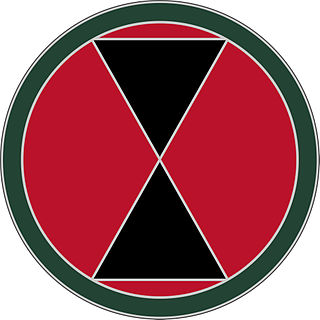
The 7th Infantry Division is an active duty infantry division of the United States Army based at Joint Base Lewis-McChord charged with sustaining the combat readiness of two Stryker brigade combat teams, a combat aviation brigade, a division artillery headquarters, and a national guard Stryker brigade combat team, as well as participating in several yearly partnered exercises and operations in support of U.S. Army Pacific and the Indo-Pacific region. The 7th Infantry Division is the only active-duty multi-component division headquarters in the Army. The 7th Infantry Division is also home to two of the Army's newest enabling battlefield capabilities, the Multi Domain Task Force and the Intelligence, Information, Cyber, Electronic Warfare and Space Capabilities, or I2CEWS battalion.
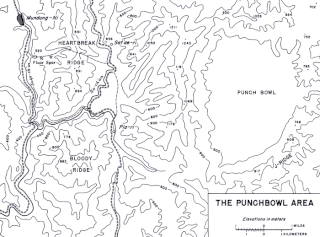
The Battle of Bloody Ridge was a ground combat battle that took place during the Korean War from 18 August to 5 September 1951.
Operation Commando was an offensive undertaken by United Nations Command (UN) forces during the Korean War between 3–12 October 1951. The US I Corps seized the Jamestown Line, destroying elements of the People's Volunteer Army (PVA) 42nd, 47th, 64th and 65th Armies. This prevented the PVA from interdicting the UN supply lines near Seoul.

Samuel Streit Coursen was a 1949 graduate of the United States Military Academy and company commander in the United States Army during the Korean War. He posthumously received the Medal of Honor for his actions on October 12, 1950.
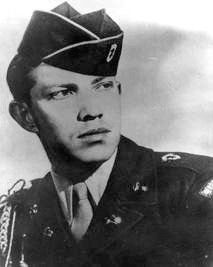
Robert Harley Young was a soldier in the United States Army during the Korean War. He posthumously received the Medal of Honor for his actions on October 9, 1950 during the UN offensive into North Korea, and was promoted to the rank of Corporal. Young is buried at Golden Gate National Cemetery in San Bruno, California.

The 1st Infantry Division is a military formation of the Republic of Korea Army's I Corps. The division was established on 1947 under the command of Colonel Kim Suk-won.
The 43rd Infantry Division was a military formation of the Korean People's Army.
II Corps is a corps of the Korean People's Army. It was created on June 12, 1950 with Lt. General Kim Kwang-hyop in command. During the Korean War the unit was composed of the 2nd Infantry Division, the 13th Mechanised Division, and the 27th Infantry Division.
Puerto Ricans have served as members of the United States Armed Forces and have fought in every major conflict in which the United States has been involved from World War I onward. Many Puerto Ricans, including those of Puerto Rican descent, have distinguished themselves during combat as members of the five branches of the U.S. Military, the Army, Marines, Navy, Air Force and the Coast Guard.
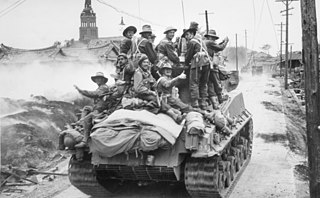
The Battle of Sariwon took place on 17 October 1950 during the United Nations (UN) counter-offensive against the North Korean forces which had invaded South Korea. With many Korean People's Army (KPA) units falling back under pressure from UN forces the 27th British Commonwealth Brigade under Brigadier Basil Coad—–comprising the 1st Battalion, the Argyll and Sutherland Highland Regiment, the 1st Battalion, the Middlesex Regiment and 3rd Battalion, the Royal Australian Regiment (3RAR) captured the town of Sariwon during a confused and largely one-sided action. Elements of the 7th US Cavalry Regiment were also involved. KPA casualties included 215 killed and more than 3,700 captured, whilst British-Commonwealth losses were 1 killed and 3 wounded.
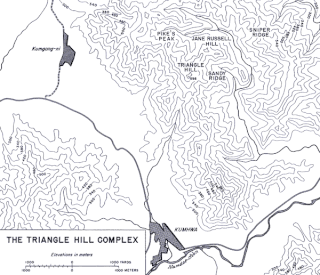
The Battle of Triangle Hill, also known as Operation Showdown or the Shangganling Campaign, was a protracted military engagement during the Korean War. The main combatants were two United Nations (UN) infantry divisions, with additional support from the United States Air Force, against elements of the Chinese People's Volunteer Army (PVA) 15th and 12th Corps. The battle was part of UN attempts to gain control of "The Iron Triangle", and took place from 14 October to 25 November 1952.

The Battle of Chongju took place during the United Nations Command (UN) offensive towards the Yalu River, which followed the North Korean invasion of South Korea at the start of the Korean War. The battle was fought between Australian forces from 3rd Battalion, Royal Australian Regiment and the 17th Tank Brigade of the Korean People's Army (KPA) for control of Chongju, North Korea and the surrounding area. After detecting a strong KPA armoured force equipped with T-34 tanks and SU-76 self-propelled guns on a thickly wooded ridgeline astride the line of advance, the Australians launched a series of company attacks with American M4 Sherman tanks and aircraft in support. Despite heavy resistance the KPA were forced to withdraw and the Australians captured their objectives after three hours of fighting.

The Battle of Unsan, also known as the Battle of Yunshan, was a series of engagements of the Korean War that took place from 25 October to 4 November 1950 near Unsan, North Pyongan province in present-day North Korea. As part of the People's Republic of China's First Phase Campaign, the People's Volunteer Army (PVA) made repeated attacks against the Republic of Korea Army (ROK) 1st Infantry Division near Unsan beginning on 25 October, in an attempt to take advancing United Nations forces by surprise. In an accidental first encounter with the United States military during the Korean War, the PVA 39th Corps attacked the unprepared US 8th Cavalry Regiment in Unsan on 1 November, resulting in one of the most devastating US losses of the Korean War.
Operation Polecharge was an offensive undertaken by United Nations Command (UN) forces during the Korean War between 15–19 October 1951, following on from the successful Operation Commando which established the Jamestown Line.

The Battle of Pyongyang was one of the major battles of the United Nations' offensive during the Korean War. Following the Battle of Inchon, the UN forces re-captured Seoul, the capital of South Korea, and proceeded to advance into North Korea. Shortly after advancing, the American and South Korean forces faced the North Korean defenses near Pyongyang, the capital of North Korea, on 17 October.
The UN offensive into North Korea was a large-scale offensive in late 1950 by United Nations (UN) forces against North Korean forces.













